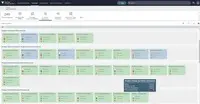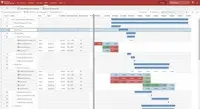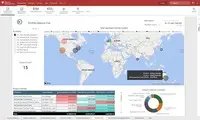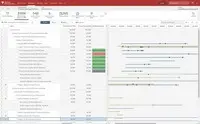Planview PortfoliosFormerly Planview Enterprise One
Overview
What is Planview Portfolios?
Planview Portfolios is an end-to-end project portfolio management and enterprise architecture management tool. It includes two components: Portfolio and Resource Management and Capability and Technology Management. The platform is available as a cloud-based or on-premise service.
Awards
Products that are considered exceptional by their customers based on a variety of criteria win TrustRadius awards. Learn more about the types of TrustRadius awards to make the best purchase decision. More about TrustRadius Awards
Reviewer Pros & Cons
Pricing
Entry-level set up fee?
- No setup fee
Offerings
- Free Trial
- Free/Freemium Version
- Premium Consulting/Integration Services
Would you like us to let the vendor know that you want pricing?
29 people also want pricing
Alternatives Pricing
Product Details
- About
- Integrations
- Competitors
- Tech Details
- Downloadables
- FAQs
What is Planview Portfolios?
Planview Portfolios is a project portfolio management and enterprise architecture management tool provided by Planview, Inc., located in Austin, TX. It includes two components: Portfolio and Resource Management (formerly Planview Enterprise), and Capability and Technology Management (formerly Troux). The platform is available as a cloud-based or on-premise service.
Portfolio and Resource Management (formerly Planview Enterprise) connects strategy to execution by improving decision making across the enterprise, including product development, IT, and services. By integrating planning and execution, it enables organizations to prioritize their portfolios, balance organizational capacity against demand, link plans and resources to project execution, and manage the underlying financials of the entire process.
Capability and Technology Management (formerly Troux) is designed to drive business outcomes by connecting technology with business context. The vendor says this enables IT leaders to advance business strategies and capabilities by making better decisions about application and technology portfolios. According to the vendor, the module’s data model and visualizations, combined with deep domain expertise in application and technology management, enable customers to achieve shorter time to value and to better communicate the business value of IT.
Planview Portfolios Features
- Supported: Resource Management
- Supported: Actuals: Understand Projected Versus Actuals
- Supported: In-Application Views and Reports
- Supported: Strategic Planning
- Supported: Analytics and Reporting
- Supported: Investment Prioritization
- Supported: Scenario Modeling
- Supported: Impact Analysis
- Supported: Capacity Planning
Planview Portfolios Screenshots
Planview Portfolios Video
Planview Portfolios Integrations
Planview Portfolios Competitors
Planview Portfolios Technical Details
| Deployment Types | On-premise, Software as a Service (SaaS), Cloud, or Web-Based |
|---|---|
| Operating Systems | Windows, Mac |
| Mobile Application | No |
| Supported Countries | North America, South America, Europe, Asia, Australia |
| Supported Languages | English, French, German, Spanish, Chinese, Japanese |








